Leslie Fox
Leslie Fox (1918-1992) is a British numerical analyst who was a contemporary of three men who played such an important role in my education and early professional life, John Todd, George Forsythe, and Jim Wilkinson. Although I saw less of Fox than I did of the others, he was still an important influence in my life.
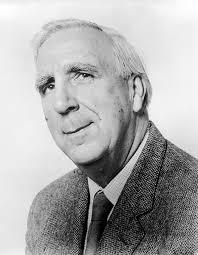
Contents
NPL
The National Physical Laboratory, in Teddington, England, just west of London, is the British equivalent of the U.S. agency that was originally called the National Bureau of Standards and is now known as the National Institute of Science and Technology. Fox worked at NPL from 1945 until 1956. Wilkinson worked there his entire professional life. Despite the fact that Fox was from Oxford and Wilkinson was from Cambridge, they became close friends.
In the first few years after World War II, both NPL and NBS sponsored the development of first generation stored program electronic computers. An initial design for the NPL machine, the Automatic Computing Engine, was proposed by Alan Turing. But the design was based in part on secret work that Turing had done during the War for breaking German military codes. The management of NPL at the time was not allowed access to Turing's secret work and judged the machine to be impractical with current technology. Disillusioned, Turing left NPL and went to the University of Manchester, where they were also building a computer.
It fell to one of Turing's colleagues, Jim Wilkinson, to take over the project and build a simplified version of the ACE, the Pilot Ace. Wilkinson went on to become the world's leading authority on matrix computation. He was my inspiration and friend. His work provided the mathematical basis for the first MATLAB. Fox was less involved in the hardware development, but he was certainly an early user of the Pilot Ace.
NBS
Meanwhile in U.S., NBS was sponsoring the development of two early machines, one at its headquarters in Maryland, the Standards Eastern Automatic Computer, or SEAC, and one in southern California, at UCLA, the Standards Western Automatic Computer, or SWAC.
NBS also established a research group at UCLA, the Institute for Numerical Analysis, or INA, to contribute to the work on the SWAC. Two members of the INA were John Todd, who a few years later as a faculty member at Caltech, would introduce me to numerical analysis and computing, and George Forsythe, who would go on to establish the Computer Science Department at Stanford and also be my Ph.D. thesis advisor.
The groups at NPL in England and INA in California were in close contact with each other and often exchanged visits. As a result, the four men -- Fox, Wilkinson, Todd, and Forsythe -- became friends and colleagues and leading figures in the budding field that today would be called computational science.
Modern Computing Methods
When I took my first numerical analysis course from Todd at Caltech in 1959, we didn't have a regular textbook. There weren't many to choose from. Todd was in the process of writing what would become his Survey of Numerical Analysis. He passed out purple dittoed copies of an early draft of the book. (Today, Amazon has 19 used copies available for $8.23 with free shipping.)
In lieu of a formal textbook, Todd also referred to this 130-page paper bound pamphlet. Its title says "Modern", but it was first published 60 years ago, in 1957. Here is a link to the hardcover second addition, Modern Computing Methods. (Amazon has 3 used copies available for $7.21, plus $3.99 shipping.)
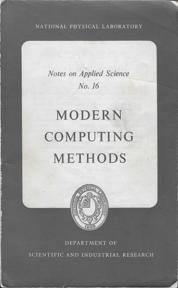
The publisher of the first edition is listed as the picturesque Her Majesty's Stationery Office. But there are no authors listed. The source is just the National Physical Laboratory. For many years I believed the authors were Fox and Wilkinson. Now, while writing this post, I have come across this review by Charles Saltzer in SIAM Review. The authors are revealed to be "E. T. Goodwin et al". Goodwin was another member of the NPL group. So, I suspect that Fox and Wilkinson were that " et al ".
Oxford
Fox resigned from NPL in 1956 and, after a year in the U.S. visiting U. C. Berkeley, joined the faculty at his old school, Oxford. He remained there the rest of his life. He established the Oxford Computing Laboratory. In 1963 he was appointed Professor of Numerical Analysis and Fellow of Balliol College. (My good friend Nick Trefethen now holds both of those appointments.)
Fox was a prolific author. The bibliography in Leslie Fox booklet lists eight books. He was also a popular professor. The same booklet lists 18 D. Phil. students that he supervised and 71 D. Phil. students where he a member of the committee.
NAG
The Numerical Algorithms Group is a British company, founded in 1970 and with headquarters in Oxford, which markets mathematical software, consulting, and related services. Fox helped the company get started and served on its Board of Directors for many years.
Householder VIII
Fox hosted the eighth Householder Symposium at Oxford in 1981. Here is the group photo. Fox is in the center, in the brown suit. (I am in the second row, second from left, in the blue shirt.)
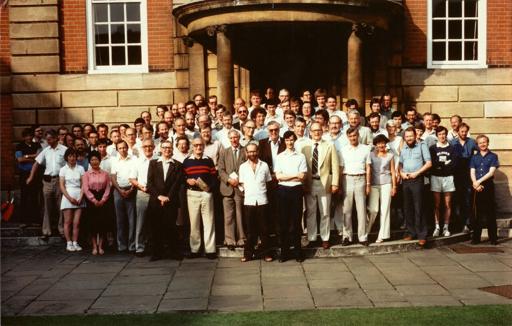
Fox Prize
The Leslie Fox Prize for Numerical Analysis is awarded every two years by the IMA, the British Institute of Mathematics. The prize honors "young numerical analysts worldwide", that is anyone who is less than 31 years old. One or two first prize winners and usually several second prize winners are announced at symposia in the UK in June of odd numbered years. Eighteen meetings and prize announcements have been held since the award was established in 1985. The 2017 call for papers is IMA Leslie Fox Prize.
The Prize Winners for 2017 were announced in a meeting in Glasgow on June 26. The first prize was awarded to Nicole Spillain of Ecole Polytechnique. Her winning paper was An Adaptive Multipreconditioned Conjugate Gradient Algorithm.
Blue Plaque
Wikipedia explains that "a blue plaque is a permanent sign installed in a public place in the United Kingdom and elsewhere to commemorate a link between that location and a famous person or event, serving as a historical marker." In June, two blue plaques were unveiled in the Dewsbury Railroad Station, in West Yorkshire, about 40 miles west of Manchester. (Google maps tells me that today trains to Manchester leave every half hour and usually can make the trip in 40 minites.)

Photo credit: Huddersfield Daily Examiner
The plaques honor two computer scientists, Leslie Fox and Tom Kilburn. Here is a local newspaper story covering the unveiling. Huddersfield Daily Examiner. It turns out the two were school mates in the local grammar school.
Tom Kilburn worked with Freddie Williams at the University of Manchester to develop the Williams-Kilburn Tube, an early random access memory employing the static charge left by a grid of dots on a cathode ray tube. The scheme provided fast access time, but required constant tuning.
Kilburn and Williams needed a stored program digital computer to test their storage device. So they built a relatively simple machine that came to be known as "Manchester Baby". One day in June, 1948, on the train from Dewsbury to Manchester, Kilburn wrote a program to find the prime factors of an integer. The code was probably only a few dozen machine instructions. When the team got the machine in shape to actually run the program it worked correctly the first time. This was the world's first working computer program, and first instance of mathematical software.
Kilburn became the Professor of Computer Science at Manchester about the same time as Fox became the Professor of Numerical Analysis at Oxford.
Further Reading
Two articles about Leslie Fox are available on the Web at Wikipedia and at the MacTutor History of Mathematics Archive.
The booklet prepared by Oxford for his memorial service is available at Leslie Fox booklet.




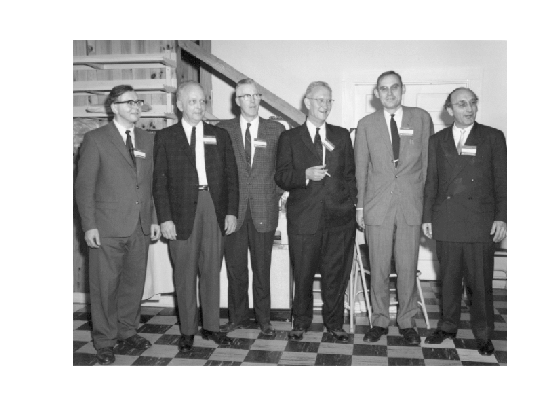
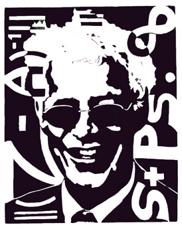


评论
要发表评论,请点击 此处 登录到您的 MathWorks 帐户或创建一个新帐户。